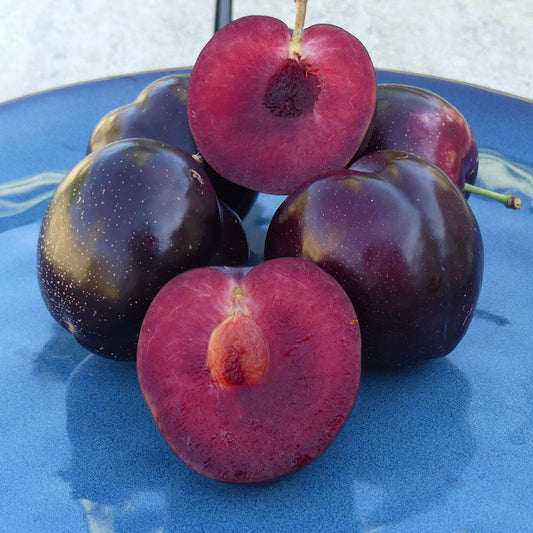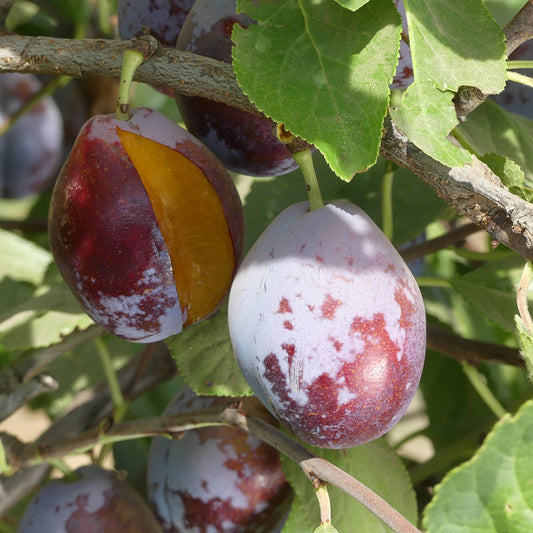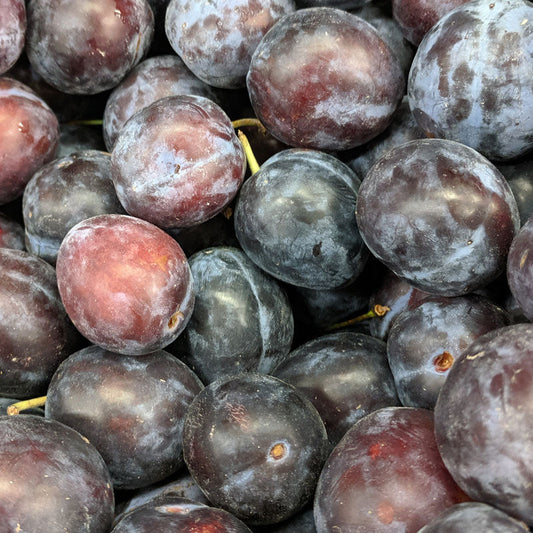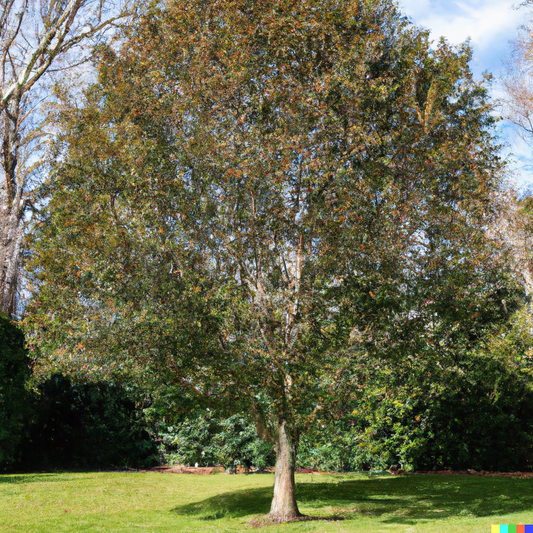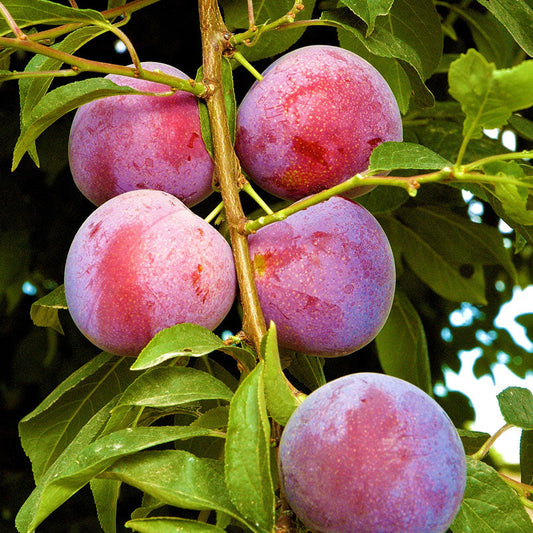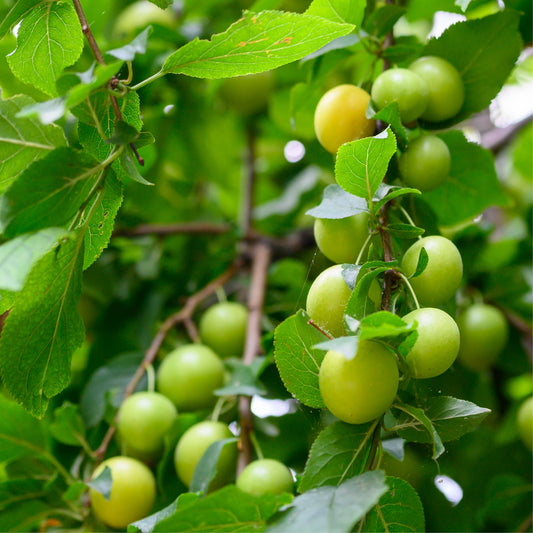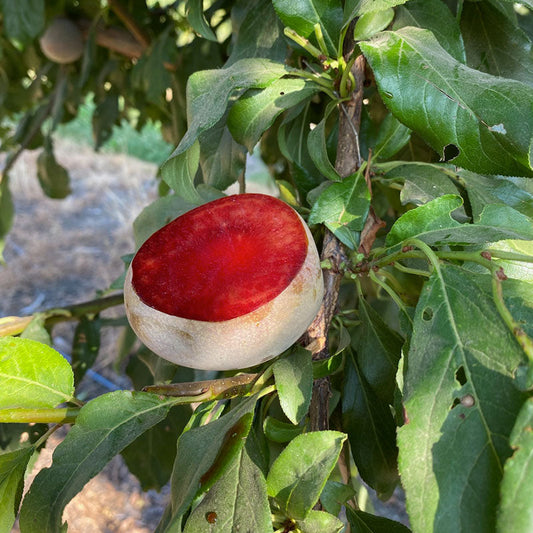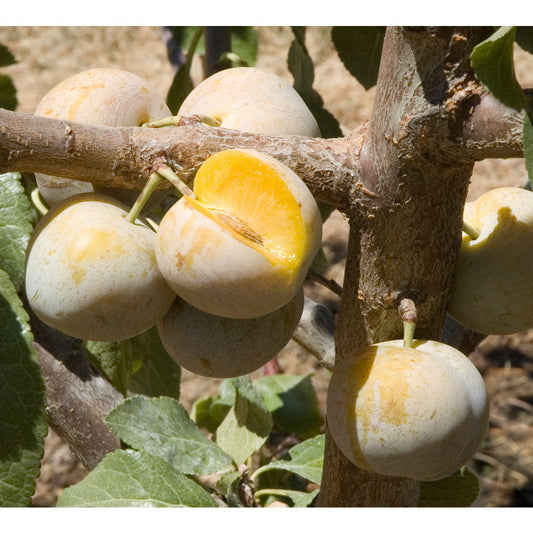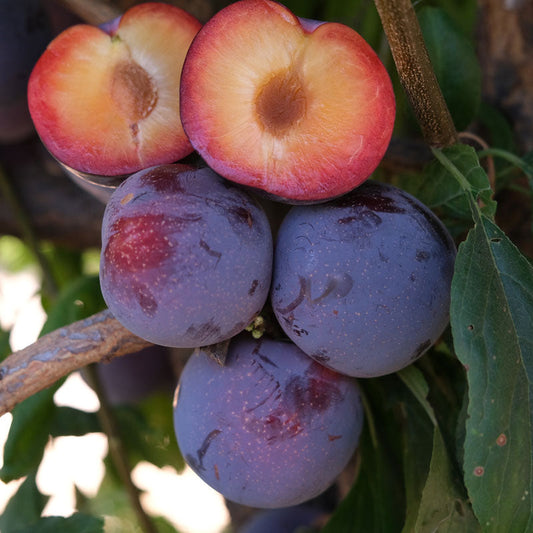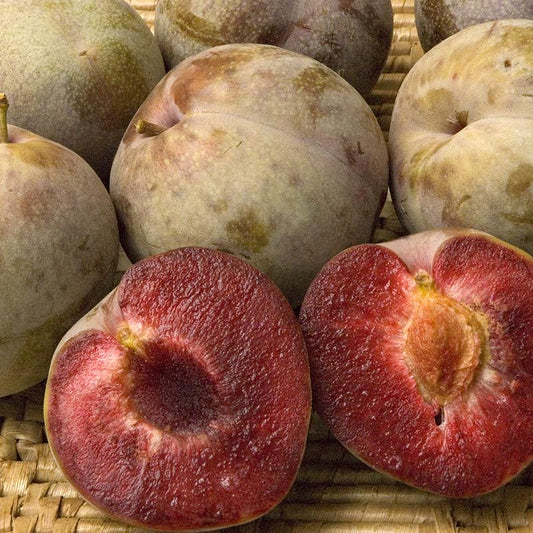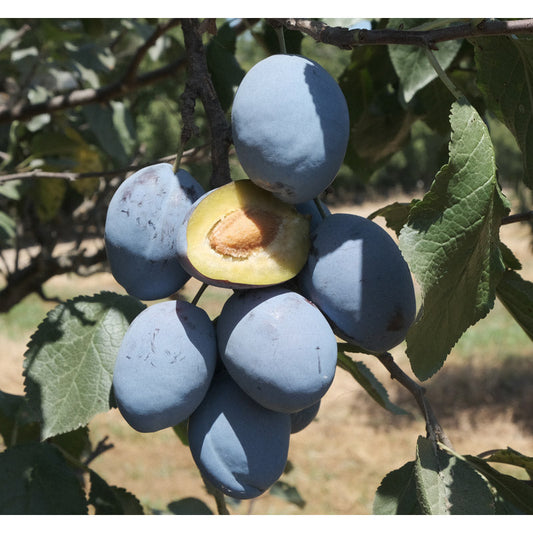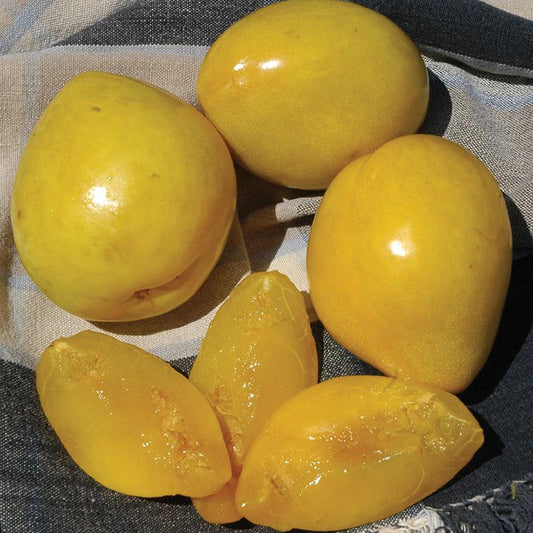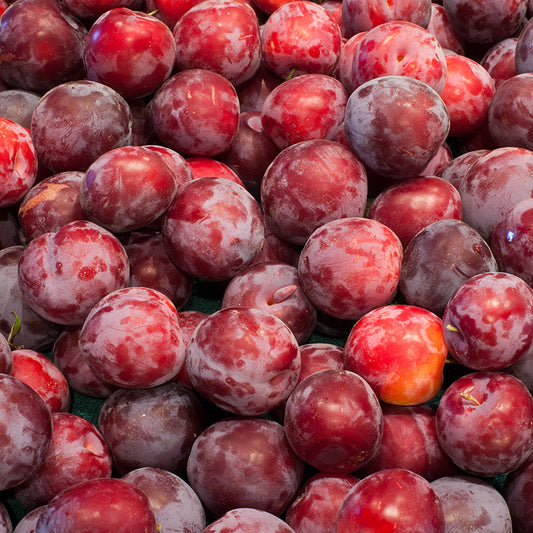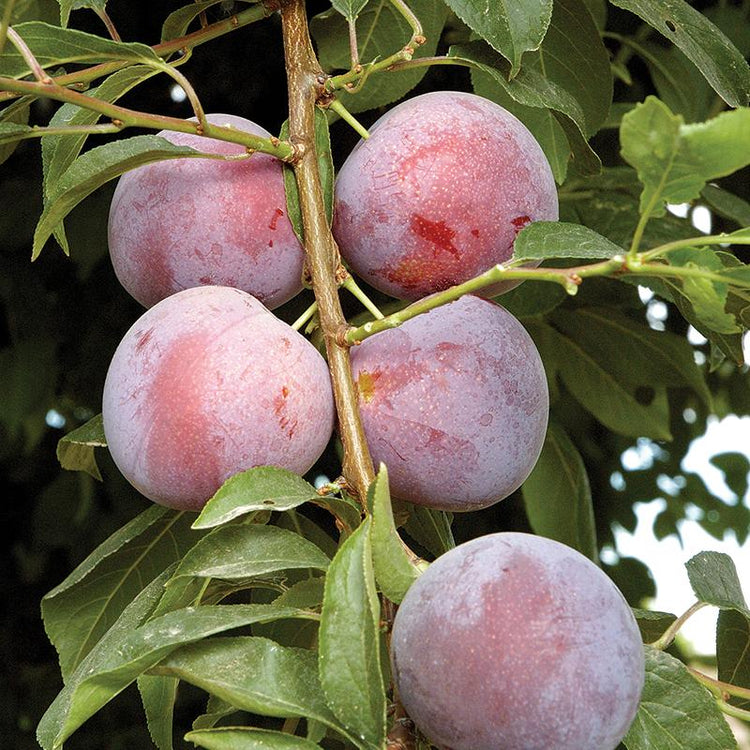Growing Plum Trees: Cultivation and Fruit Production
Plum trees (Prunus domestica) are cherished for their delightful fruits and ornamental qualities, making them a prized addition to home orchards. With various cultivars and types available, these trees offer a bounty of flavorful plums while adorning gardens with their beautiful blossoms. Plum trees grow vigorously in diverse climates, flourishing in well-draining soil and under generous sunlight. These trees establish robust root systems, supporting their graceful branching structure. Pruning aids in their growth, ensuring proper shaping, adequate air circulation, and encouraging fruit production. Come spring, these trees burst into blossoms, followed by the development of a wide variety of plums, showcasing a spectrum of colors and flavors as they mature.
Benefits of Growing Plum Trees
Growing plum trees offers a myriad of benefits, making them a fantastic choice for any home orchard. Plum trees for sale provide a diverse selection of plum varieties, including Japanese plums and European plums, known for their excellent flavor and high sugar content. These trees not only enhance your garden with their vibrant blooms and delicious fruits but also yield juicy, sweet plums ideal for fresh eating, jams, and jellies. With options like self-fertile varieties and the popular Santa Rosa and Queen Rosa plums, you can enjoy a fruitful harvest from mid-July through fall, adding both beauty and bounty to your home garden.
Understanding Plum Trees
-
Prunus domestica: Plum trees belong to the Prunus domestica species, encompassing numerous cultivars yielding a range of plums.
-
Fruit Production: Typically producing fruits that showcase a diverse spectrum of colors, flavors, and sizes.
Cultivating Plum Trees
-
Planting Process: Opt for well-draining soil and a sunny location when planting plum trees.
-
Pruning Requirements: Regular pruning, especially during the dormant season, aids in shaping the tree, enhancing air circulation, and promoting fruit development.
Types of Plum Trees
-
Santa Rosa Plum Tree: The Santa Rosa Plum Tree is renowned for its large, sweet, and juicy fruit. It is highly productive and suitable for zones 5-9, making it a favorite among plum enthusiasts.
-
Burgundy Plum Tree: This variety produces medium-sized, dark red plums with a sweet and flavorful profile. Ideal for fresh consumption or preservation, the Burgundy Plum Tree thrives in zones 5-9.
-
Italian Plum Tree: Italian plum trees yield small to medium-sized oval-shaped plums with a sweet-tart flavor. They are versatile, perfect for fresh eating or drying into prunes, and excel in zones 5-9.
-
Satsuma Plum Tree: Satsuma plums are celebrated for their sweet and juicy flesh. These adaptable trees can thrive in zones 5-9, making them a reliable choice for many regions.
-
Mariposa Plum Tree: The Mariposa Plum Tree is another cold-hardy option, suitable for zones 5-9. It produces medium to large-sized plums with a sweet and juicy taste, a valuable addition to any orchard.
Plum Tree Care
-
Pollination: Many plum varieties benefit from cross-pollination, requiring another compatible plum tree nearby for increased fruit production.
-
Watering Needs: Consistent watering promotes healthy growth and fruit set during dry periods and fruit development.
-
Pest and Disease Management: Regular monitoring and appropriate treatments help control pests like plum curculio and diseases such as brown rot.
-
Harvesting Plums
-
Ripening Process: Plums generally ripen on the tree, becoming softer and developing their characteristic colors.
-
Harvest Timing: Harvest plums when they reach their mature color, gently twisting to detach from the tree to avoid damaging the fruit.
Maximizing Fruit Production
-
Fertilization: Application of balanced fertilizers in early spring can bolster tree health and fruit development.
-
Thinning Fruits: Thinning excess fruit promotes larger and better-quality plums by reducing competition among fruits.
Common Challenges with Plum Trees
-
Frost Damage: Late frosts can harm blossoms, impacting fruit set and yield.
-
Disease Susceptibility: Plum trees may face diseases like bacterial spot or fungal infections, requiring preventive measures and prompt treatment.
Pollination and Fruit Production
Importance of Pollination for Plum Trees
Pollination is crucial for maximizing fruit production in plum trees. While some plum tree varieties, like the Santa Rosa and Queen Rosa, are self-fertile and can produce fruit on their own, others benefit from cross-pollination to enhance yield and quality. For a thriving home orchard or garden, it's important to consider planting a mix of plum trees, including both Japanese plums and European plums, to ensure effective pollination. This practice promotes the development of juicy, sweet plums with excellent flavor, ensuring a bountiful harvest from mid-July through fall.
Cross-Pollination Requirements
For optimal fruit production in plum trees, cross-pollination is often necessary to enhance fruit set and quality. While some plum tree varieties, such as the Santa Rosa and Queen Rosa, are self-fruitful and can produce plums independently, many others, including Japanese plums and European plums, benefit from having another compatible plum tree nearby. Planting a diverse selection of plum trees, including American hybrids and those with red flesh or amber flesh, in your home orchard can improve pollination, resulting in a bountiful harvest of juicy, sweet plums with excellent flavor from mid-July to fall.
Maximizing Fruit Production
To maximize fruit production in your home orchard, consider planting a variety of plum trees to enhance cross-pollination. Many plum tree varieties, such as Santa Rosa and Queen Rosa, are self-fruitful, but pairing them with other Japanese plums or European plums can increase yields. Ensuring proper care, including pruning in spring and providing adequate water and nutrients, will help your plum trees grow vigorously and produce plums with high sugar content and excellent flavor from mid-July through fall.
Pest and Disease Management
Common Pests Affecting Plum Trees
Plum trees, including Japanese plums and European plums, are susceptible to a variety of pests that can impact their health and fruit production. Common pests such as plum curculio and aphids can damage the skin and flesh of plums, affecting their taste and ripening process. Regular monitoring and timely intervention are crucial to protect your plum tree varieties, including Santa Rosa and Queen Rosa, ensuring that they remain vigorous and produce juicy, sweet fruit with high sugar content in mid-July through fall.
Disease Prevention and Treatment
To ensure the health of your plum trees, including Japanese plums and European plums, regular disease prevention and treatment are essential. Implementing practices such as proper pruning and timely application of fungicides can help manage common issues like brown rot and bacterial spot. Maintaining good air circulation around your trees and promptly addressing any signs of disease will support vigorous growth and ensure that your plum varieties, like Santa Rosa and Queen Rosa, produce sweet, juicy fruit with high sugar content throughout the season.
Integrated Pest Management Strategies
For optimal health and productivity of your plum trees, including Japanese plums and European plums, implementing Integrated Pest Management (IPM) strategies is crucial. Regularly inspect your plum trees, such as the Santa Rosa and Queen Rosa varieties, for signs of pests like plum curculio and aphids. Use a combination of natural predators, such as beneficial insects, and targeted treatments to manage these pests effectively while minimizing harm to your home garden. Pruning and proper planting techniques also play a key role in reducing pest populations and promoting the vigorous growth and excellent flavor of your plums.
Growing plum trees is rewarding, offering an abundance of delicious fruits while adding aesthetic value to gardens. By understanding their varieties, care needs, and potential challenges, enthusiasts can foster healthy plum trees and relish the delightful bounty they produce.
Why Buy Plum Trees For Sale?
Investing in plum trees for sale offers a rewarding addition to any home garden or orchard. With a diverse selection of plum tree varieties, including Japanese plums and European plums like the Santa Rosa and Queen Rosa, you can enjoy plums with exceptional flavors, from the sweet, amber flesh of American hybrids to the firm, juicy red flesh of other cultivars. Whether you’re aiming to harvest plums for fresh eating, jams, or jellies, these trees are self-fruitful and thrive in various climates, ensuring a bountiful and delicious fruit crop from your home orchard. Start growing your own delicious plums today—browse our selection of plum trees for sale and find the perfect varieties for your garden!

